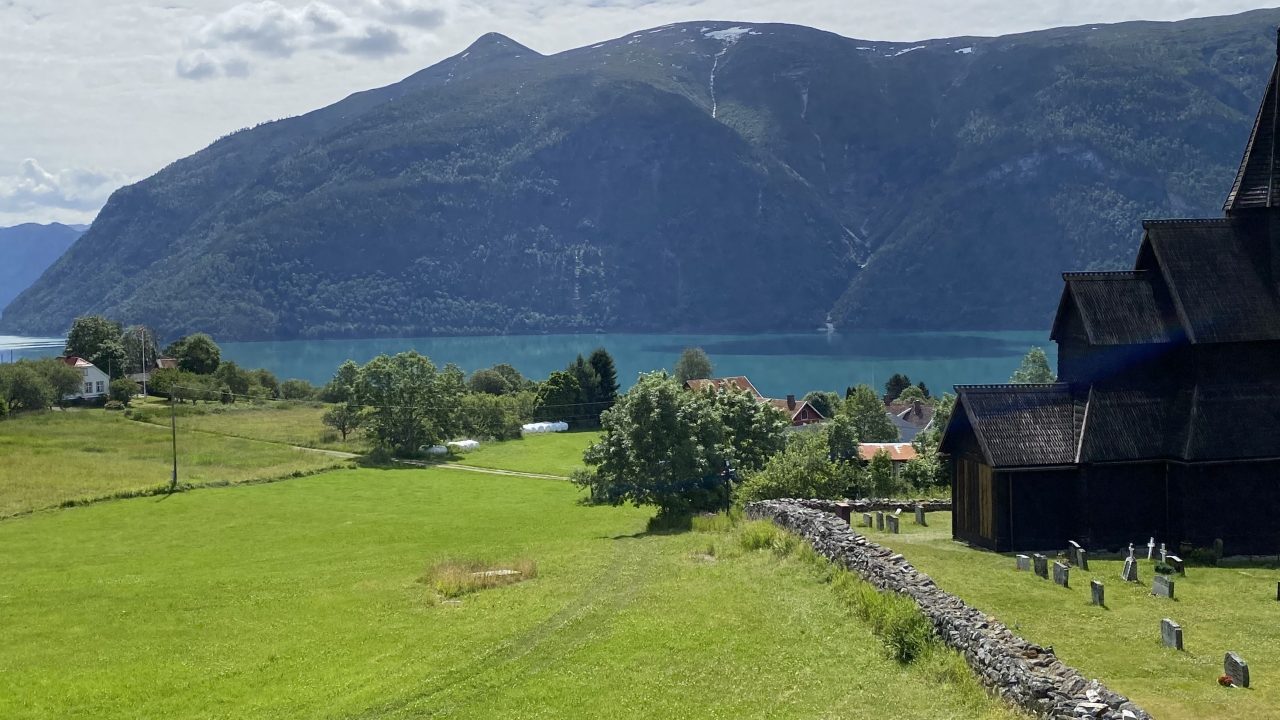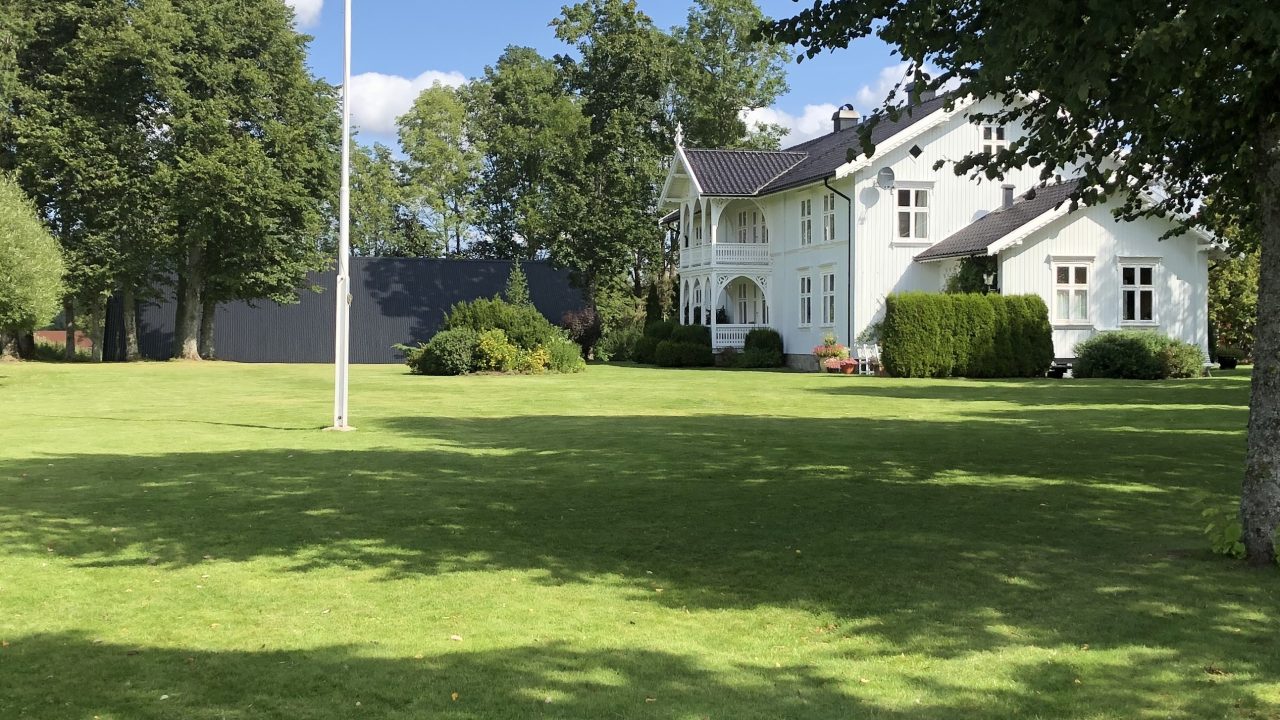
Text coming

In the Cultural Heritage Act it is stated that cultural monuments, sites and environments with their distinctive character and variation shall be protected both as part of our cultural heritage and identity, and as part of integrated environmental and resource management.
It is a national responsibility to safeguard these resources as scientific source material and as a lasting basis for the experience, self-understanding, well-being and activities of present and future generations.
By cultural heritage, the law understands all traces of human activity in our physical environment, including localities associated with historical events, beliefs or traditions. Cultural environments refer to areas where cultural heritage is part of a larger whole or context.
We endorse the view of the importance of preserving cultural heritage, and the company is a member of the National Trust of Norway. On the other hand, we see that the Cultural Heritage Act and measures pursuant thereto may cause difficulties for owners and users of real property.
Cultural monuments from ancient times and the Middle Ages, i.e. from before 1537, Sami cultural monuments from 1917 or older and standing buildings from the period 1537-1649, are automatically protected and are the property of the State of Norway. Newer cultural monuments and sites can be protected by individual decisions.
On properties where there is a protected cultural monument, there is generally a prohibition on measures that may affect the cultural heritage, typically a Viking burial mound. If the owner wishes to implement measures, the Act stipulates requirements for notification and obtaining permission from the authorities. Investigations may incur costs for the landowner or developer.
It is important to proceed in the right way according to the law. We can assist with advice on the law and when contacting the authorities.
The content of this overview is intended to provide a general guide to the subject matter. Specialist advice should be sought about your specific circumstances.

The use of real property may be subject to a permit – a concession – from the authorities. The central act is the Act relating to concession in the acquisition of real property.
In principle, there is a licence obligation for all land resources outside LNR areas (landuse, nature and recreational areas). An important exception, however, is built-up property up to approximately 25 acres, when full and surface cultivated land is no larger than approximately 8,6 acres. Such properties are licence-free unless the municipality has introduced a concession obligation by regulations. In some municipalities, a so-called zero limit for concessions has been introduced, which means that the transferee must complete a declaration form, which is sent to the municipality, or apply for a concession.
The legislation also contains a law on concessions for rights to waterfalls, etc. (the Waterfall Rights act).
We assist acquirers of property in connection with concession issues.
The content of this overview is intended to provide a general guide to the subject matter. Specialist advice should be sought about your specific circumstances.

If the owner of real property wishes to build or initiate other measures on the property, in most cases a permit must be sought before the work is initiated. The central act in this area is the Act relating to planning and processing of building applications.
First, the Act has a plan or land-use section, which relates to how the country's land is to be used and regulated.
The second main part contains rules on the processing of construction cases, and is intended to ensure proper execution and control of construction work.
Loven gjelder alle typer aktiviteter og virksomheter knyttet til fast eiendom. Den gjelder for hele landet og alle tiltak. Med «tiltak» etter loven menes oppføring, riving, endring, herunder fasadeendringer, endret bruk og andre tiltak knyttet til bygninger, konstruksjoner og anlegg, samt terrenginngrep og opprettelse og endring av eiendom. Som tiltak regnes også annen virksomhet og endring av arealbruk som vil være i strid med arealformål, planbestemmelser og hensynssoner.
Implementation of measures covered by the Act may only take place if they do not conflict with the provisions of the Act and associated regulations, the land-use part of the municipal master plan and the zoning plan; cf. chapter 20 of the Act relating to the obligation to apply and permit applications. This also applies if the project is exempt from the obligation to apply.
We assist landowners and others in connection with building applications and any rejection of applications.
The content of this overview is intended to provide a general guide to the subject matter. Specialist advice should be sought about your specific circumstances.

A real estate requires follow-up and maintenance. Often there is a need to engage professionals; craftsmen such as electricians, plumbers, masons, etc.
Parties that are not consumers agree on what is to be performed, either in writing or orally. Disagreements about the work often have to be settled by finding out what was actually agreed, and how the agreement should be legally understood.
Many agreements on artisan services take place when the owner of a property, who is a consumer, engages a craftsman to perform works on the property. In such cases, the Craftsman Services Act shall apply.
The Act applies to agreements or assignments concerning specific services (repairs, maintenance, installations, conversions, etc.) entered into between service providers in their business activities and consumers. In this case, too, disagreement about the assignement often has to be decided by finding out what was actually agreed, and how the agreement is to be legally understood. But the provisions of the law are set to protect the consumer and contain rules that impose additional obligations on the craftsman.
We assist both craftsmen and buyers of craftsman services in disputes. If an amicable solution is not appropriate, we also assist in cases before the courts.
The content of this overview is intended to provide a general guide to the subject matter. Specialist advice should be sought about your specific circumstances.

Unfortunately, neighbourliness not infrequently gives rise to disagreements and, at worst, legal disputes between neighbours. We can assist with advice and in a legal dispute with a neighbour.
The relationship between neighbours is basically regulated by the Neighbours Act. The main provision is section 2, which reads: "Nobody must have, do or start something which unreasonably or unnecessary damages or disadvantages the neighboring property. A disadvantage includes something that may be considered dangerous."
The provision provides a basis for discussion and subsequent disagreement, including on buildings, construction, utilisation and use of neighbouring property. A very common source of disagreement is the height and design of hedges against neighboring property.
The Neighbours Act must be supplemented by the Fencing Act. The act contains provisions in respect of fences against the neighbouring property.
The content of this overview is intended to provide a general guide to the subject matter. Specialist advice should be sought about your specific circumstances.

A real estate is defined by a farm number and property unit number in a municipality, and registered in Matrikkelen, which is kept by the Norwegian Mapping Authority. The Cadastre is Norway's official property register, and contains information about property boundaries, area, buildings, homes and addresses.
The Land Registry is a public register, which lists registered rights and obligations in property. Previously, the Land Registry was a physical book with handwritten sheets, but now it is a data register managed by the Norwegian Mapping Authority. The most commonly registered rights are mortgage bonds, which secure loans and other monetary obligations assumed by the owner of the property. Agreements for others to use the property, typically the right to travel across the property or to have sewer lines and electrical wiring in the ground or air, are also common.
Anyone can check what is registered in the Cadastre or registered in the Land Registry. This requires login.
In addition to registered rights, there may be non-registered rights in the property, which may be personal to a rights holder, or real rights for another property, typically the right of access.
The public may also have the right to pass over the property: a right of public access or commons. There may also be a latent right on the property in the form of a claim for posession.
All of these rights may give rise to disagreement and dispute, where we can assist one or more parties with advice and in any dispute.
The content of this overview is intended to provide a general guide to the subject matter. Specialist advice should be sought about your specific circumstances.

We advise landlords, tenants, trustees and others involved in renting of real estate.
When renting commercial property, the parties enter into an agreement, either by using a standard agreement, or by a concrete negotiated agreement for the relevant tenancy.
Rental of property for housing is regulated by the Tenancy Act. Mange av bestemmelsene i loven kan ikke fravikes til skade for leietaker, og det er viktig å påse at loven overholdes.
We assist landlords and tenants in disputes concerning the tenancy before the courts.
The content of this overview is intended to provide a general guide to the subject matter. Specialist advice should be sought about your specific circumstances.

Transfer of real property often takes place when the seller has engaged a real estate agent, who uses his standard purchase contract to document the agreement between buyer and seller.
In principle, the parties have freedom of contract, but the purchase contract must satisfy mandatory rules in the Disposal Act.
The Disposal Act regulates the rights and obligations between the buyer and the seller when transfering of real property by voluntary sale, or when disposal takes place by exchange or gift. Some provisions cannot be deviated from to the detriment of the buyer when he or she is a consumer.
We assist with advice when concluding the contract and in connection with subsequent disagreement about the contract, the seller's delay in handing over the property or the buyer's delay in payment of the purchase price, or in the buyer's complaint about actual or legal defects in the property. If necessary, we assist our party in disputes before the courts.
The content of this overview is intended to provide a general guide to the subject matter. Specialist advice should be sought about your specific circumstances.